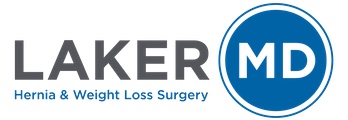It is well known that midline incisions can be complicated by the formation of an incisional hernia. In fact, the surgical literature suggests that midline laparotomies (vertical midline incisions) are complicated by hernia formation in 10-30% of patients. There are several factors that are potentially causative and these include increasing age, being overweight/obese, smoking, previous abdominal surgery, concurrent medical conditions, infection and technical issues.
Several techniques have emerged over the last 30 years to address this growing challenge in both mesh repairs and primary closure techniques. It is established that mesh based repairs have a recurrence rate of 5-30% as opposed to primary repairs (sutures only) with recurrence rates in upwards of 50%. Additionally, laparoscopic techniques have been demonstrated to hasten recovery and manage hernias of many sizes. Despite the advancement in minimally invasive techniques larger hernias and recurrent hernias after repair remain a life altering situation for patients and a complex challenge for surgeons.
A surgical trend in re-establishing the midline muscular structures has begun to reemerge. This is the result of a better understanding of the mechanical properties of an intact abdominal wall and in overall health and wellbeing. Hernias of large size (> 7cm) may require more complex operative strategies and repair. The most commonly used repairs to address complex abdominal wall hernias are referred to as component separation techniques. These open techniques take advantage of the layered anatomy of the abdominal wall that is made up of three sheet like muscles and two rectus muscles. Each muscle is also encased in a fibroconnective sheath. The deepest muscle layer (transversus abdominus) or most superficial muscle layer (external oblique) can be divided and the spaces between theses layers enlarged allowing midline re-approximation in some of the largest ventral hernias. Often, mesh is also utilized to add strength and stability to the repair.
Dr. Laker employs several techniques for complex abdominal wall hernias including:
- Rives-Stoppa
- External oblique release and advancement
- TAR (transversus abdominus release)
Component separation techniques require a very strong understanding of abdominal wall anatomy and biomechanics. Dr. Laker is very experienced in these techniques and is often referred complex abdominal wall hernia patients for evaluation and management. When performed correctly, component separation repairs have demonstrated one of the lowest recurrence rates of all abdominal wall reconstruction procedures

